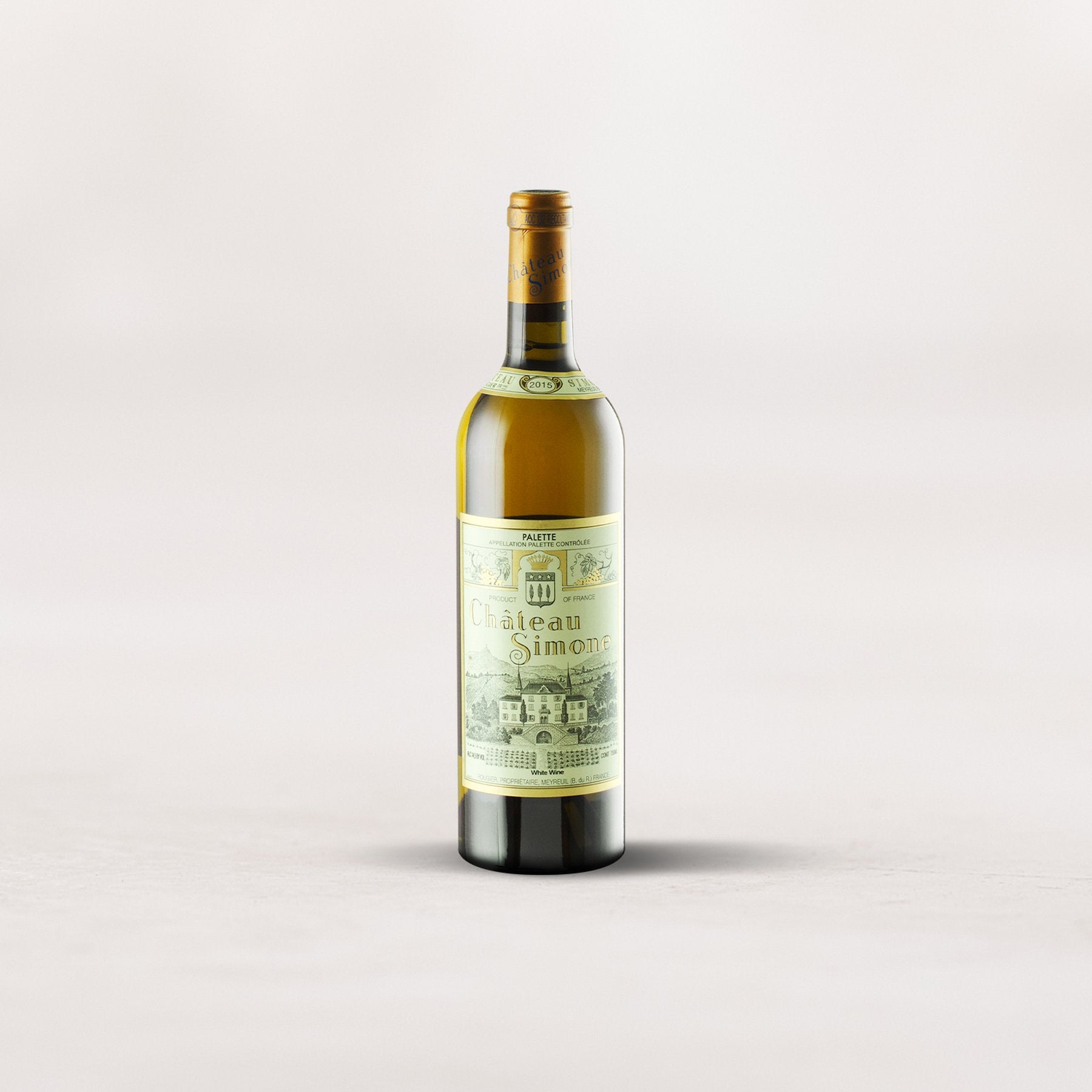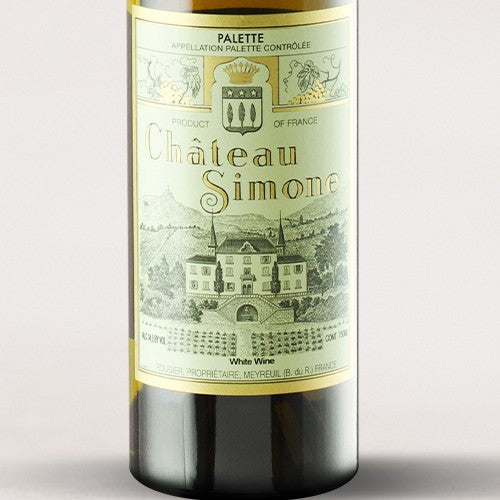Exciting doesn’t adequately describe Château Simone’s 2015 Palette Blanc. Neither does riveting. This is certifiably enthralling, bewitching stuff. Imagine, if you can, a hybrid of evolving Grand Cru white Burgundy, López de Heredia Blanco, and JL Chave Hermitage Blanc—it’s a one-of-a-kind wine experience! And yet, that’s only one of the reasons I’m always impressed with the allure of Château Simone.
Owned by generations of the Rougier family for nearly 200 years, Simone delicately crafts their supernatural Palette Blanc from a sorcerous blend (Clairette, Grenache Blanc, Ugni Blanc, Bourboulenc, Picpoul, Muscat, Sémillon) of ancient raw material and ages it in their hand-dug 16th-century cellar far longer than most. Bottom line, when it comes to Simone’s Palette Blanc, there’s simply no choice but to pile on superlatives, and if you’re striving to own the world’s most enchanting wines, today’s singular, deeply evocative bottle must be at the very top of your list. Quantities are distressingly low as always: purchases must be capped at six bottles.
NOTE: Did you know? Château Simone also makes a rarefied full-bodied rosé that drinks like no other, and this marks the first time we’ve ever had access to a parcel of any quantity. Roughly 100 cases came into the country. Five remain. Purchase up to two bottles here.
Owned by the Rougier family since 1830, the property clings to a single hillside in Montaiguet, a small hamlet just east of Aix-en-Provence, 20 miles north of Marseille. The appellation that encompasses this village is Palette AOC, and even as a small independent producer, Château Simone produces a majority of the wine labeled within the designation. To the naked eye, Château Simone appears to be a classic family-run estate, but it’s impossible to begin discussing the property without immediately diving into the myriad qualities that make this one of the most distinctive estates in France.
The first and perhaps most shocking feature of the Rougier family’s vines is that they are north-facing. Yes, you read that correctly—Simone’s vines cling to a 750-foot limestone face that is angled away from the sun. This is unusual, but it allows the vines to retain their freshness, despite the region’s fierce heat. It is one of the very few north-facing vineyards (in the northern hemisphere) I’ve ever seen that produces world-class wine.
Next, there is a mind-boggling diversity of grape varieties among these ancient vines. Château Simone’s reds contain Grenache, Mourvèdre, Cinsault, Syrah, Manosquin, Castet, Carignan, Cabernet Sauvignon, and Muscat Noir. Not to be outdone, today’s white is predominately composed of Clairette with a massive supporting cast of Grenache Blanc, Bourboulenc, Sémillon, Ugni Blanc, Picpoul, and Muscat.
Finally, the character of Château Simone’s wines is perhaps what is most unique and fascinating for sommeliers. Despite the punishingly hot and long growing season, the preternaturally old vines, and mixed bag of varieties, Château Simone does not produce heavy wines. On the contrary, the Rougiers are renowned for bottling chiseled whites (they don’t go through malolactic!) that are defined by their power, elegance, balance, and detail.
Grapes for Simone’s blanc are harvested by hand, de-stemmed, and lightly pressed before fermentation. A native-yeast fermentation lasts for two to three weeks in wooden vats at an unmanipulated temperature. The resulting wine is aged for one year in old foudres, followed by an additional year in mostly neutral oak barrels without any lees stirring. Then, the wine is bottled and aged further. All told, the process takes more than four years before release into the US market.
Let’s go back to start, where I called this 2015 Palette Blanc a dynamic hybrid of Grand Cru White Burgundy, López de Heredia Blanco, and JL Chave Hermitage Blanc. I understand that may be information overload for some so, in simpler terms, this is a rich, deeply textured, singular white wine that changes like a chameleon over the course of an evening. After a 30-minute decant, serve in bulbous Burgundy stems, around 50-55 degrees, and prepare for a kaleidoscopic show: yellow apple, poached pear, salt-preserved lemon, nougat, lees, petrol, crushed stone, honeysuckle, wild herbs, rosin, oak spice, and exotic flowers. This is a full-bodied libation, no doubt, but the freshness and tension of each sip gives it an extra dimension that legions of white wines over 14% ABV lack. It’s a contemplative wine—warm, inviting, powerful, broad, poised, unctuous—that leaves a long, savory, wholly unique finish. Enjoy your bottles now and over the next 5-8 years. Cheers!











